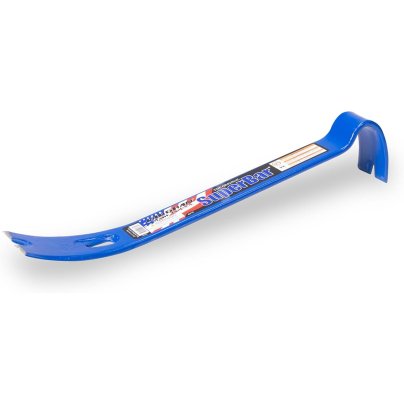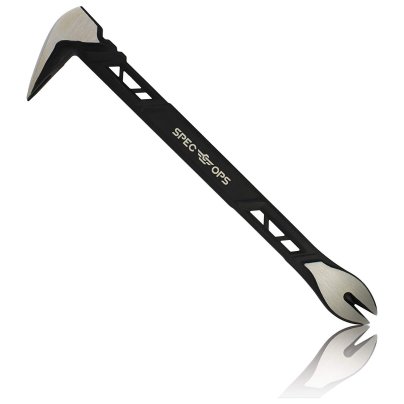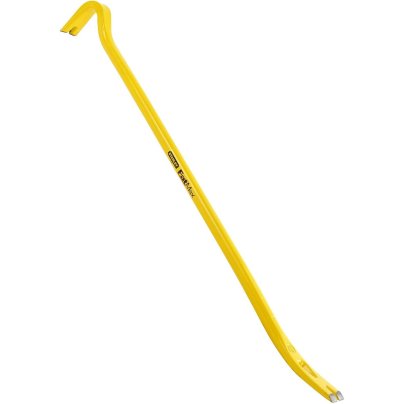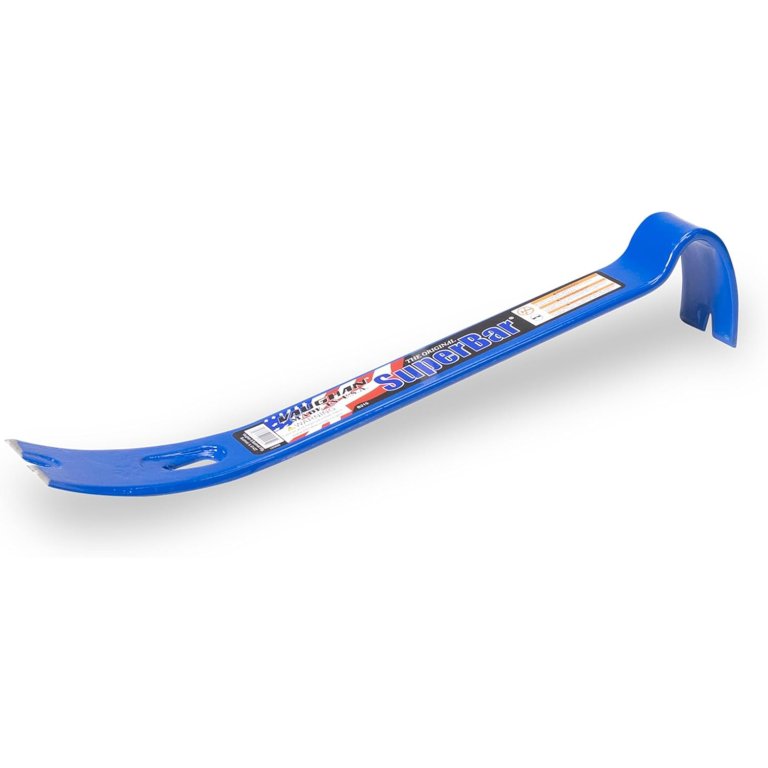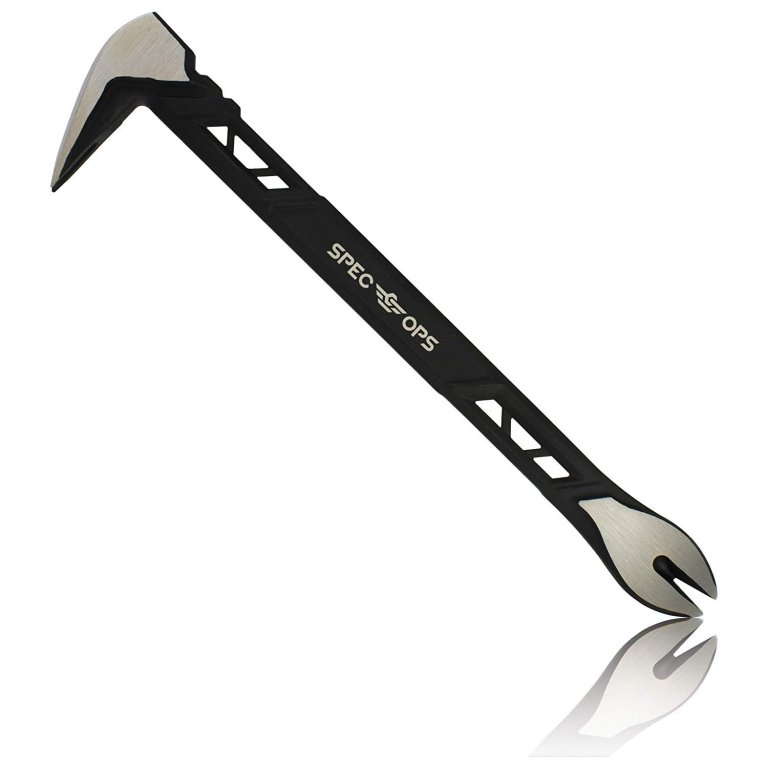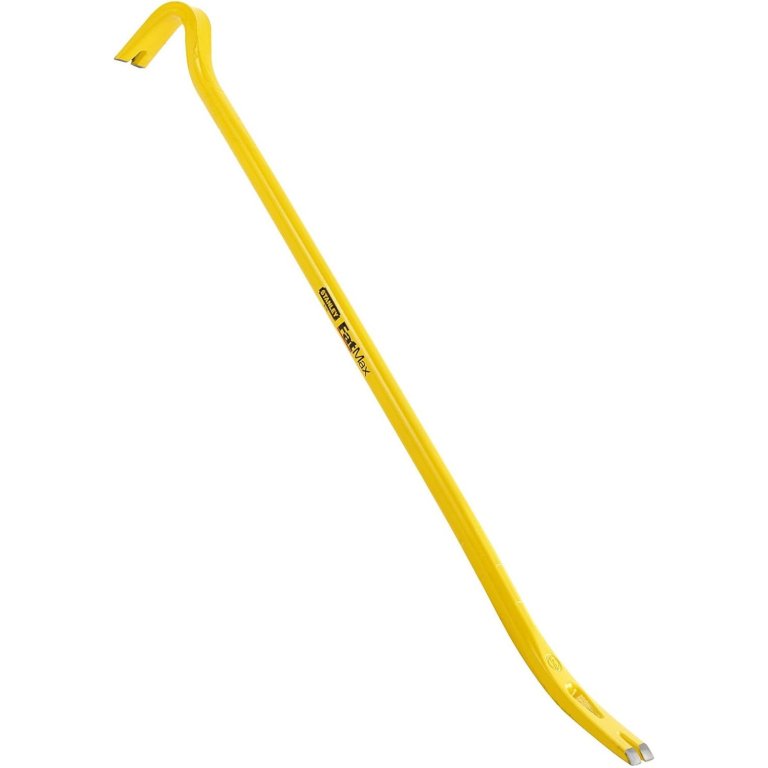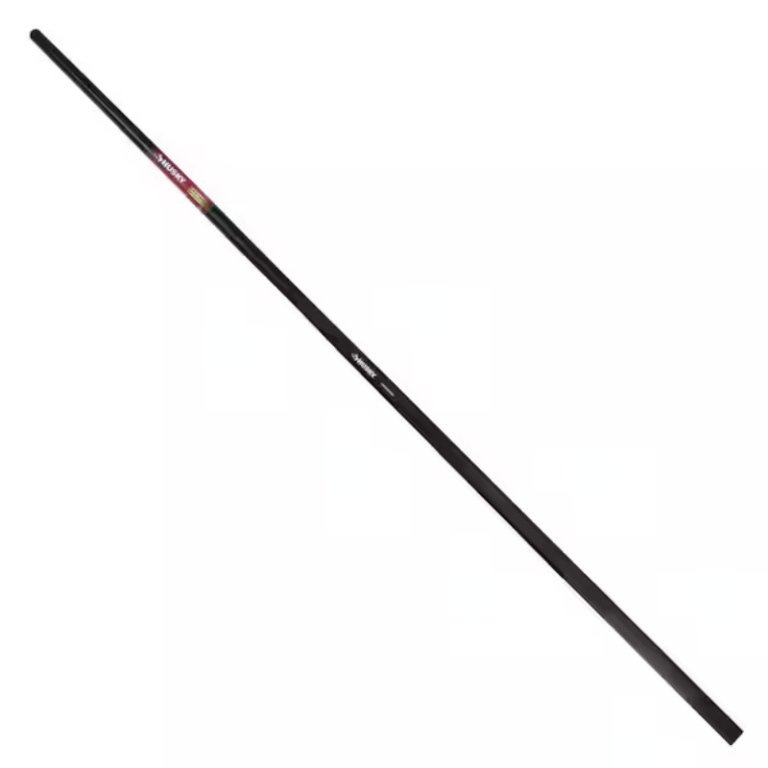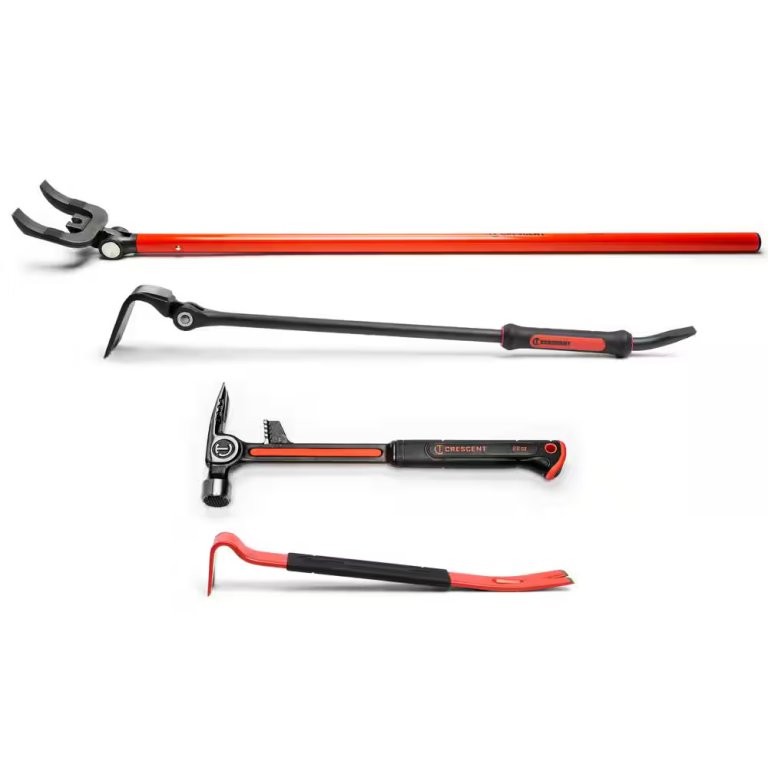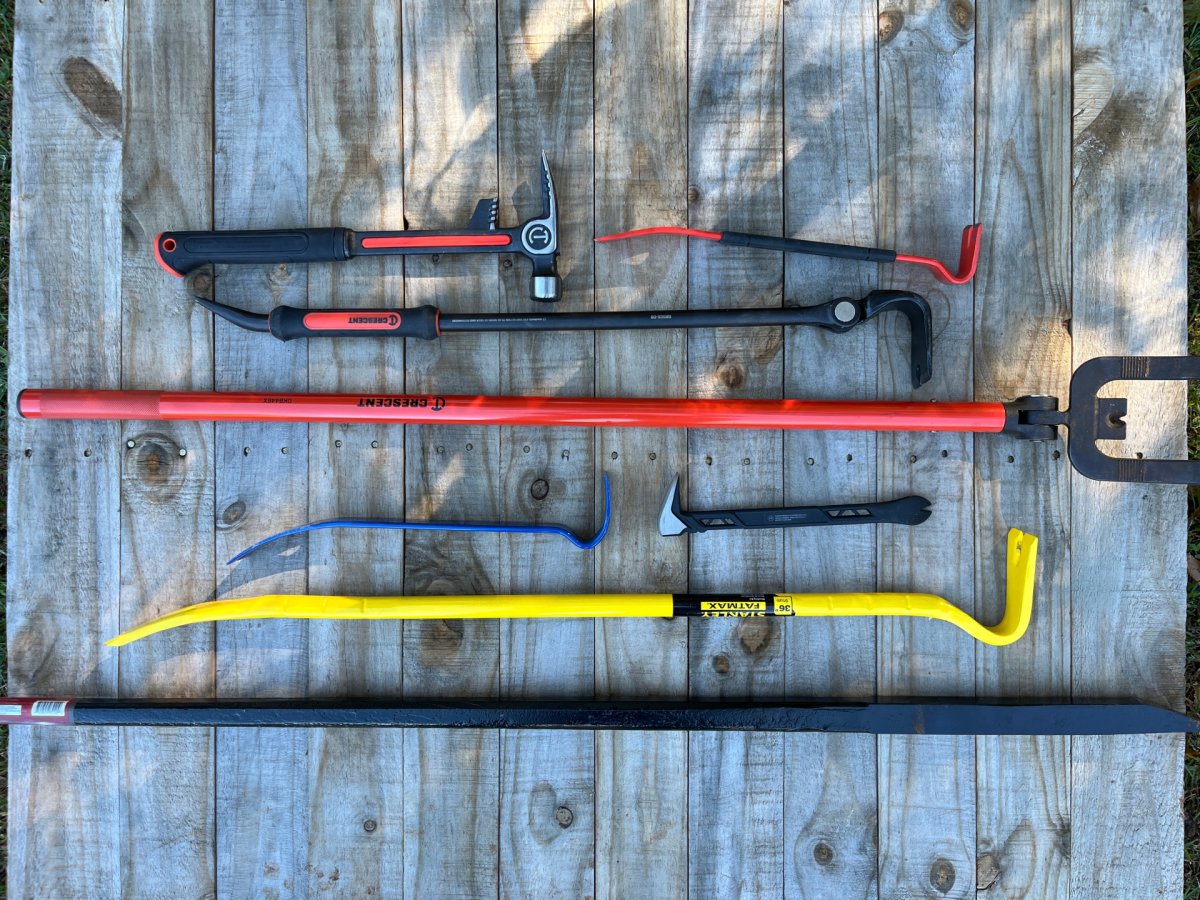
We may earn revenue from the products available on this page and participate in affiliate programs. Learn More ›
A good pry bar is an essential tool for home repairs, remodeling, and demolition, and there are plenty of specialized designs to choose from. Tools like wrecking bars and crowbars have the size and bulk for heavy-duty jobs, while flat pry bars and cat’s paw nail pullers are better built for intricate work. We spent 2 days testing five different pry bars in order to learn more about their capabilities when it comes to pulling nails, separating boards, and lifting heavy objects.
Our favorite of the bunch was the Vaughan 15-inch Flat Pry Bar. It was inexpensive, and we found the slender bar, dual nail pullers, and rocker head to be useful for the widest range of applications we tested for. However, at just 15 inches long, it only offers moderate leverage and reach. For heavier-duty projects or more specialized performance, other tested models could be better picks.
As with other hand tools, quality counts when it comes to choosing one that will handle your projects for years to come. In this guide, we’ll review the shopping considerations that helped us choose the specific tools that we tested, detail how we tested them, and share our top picks of the best pry bars for all kinds of projects.
- BEST OVERALL: Vaughan 15-Inch Flat Pry Bar
↓ Jump to Review - BEST BANG FOR THE BUCK: Spec Ops 11-Inch Cat’s Paw Nail Puller
↓ Jump to Review - BEST FOR DEMOLITION: Stanley FatMax 36-Inch Wrecking Bar
↓ Jump to Review - BEST FOR LANDSCAPING: Husky 60-Inch Pinch Point Pry Bar
↓ Jump to Review - BEST SET: Crescent 4-Piece Demolition Hammer and Pry Bar Set
↓ Jump to Review
Pry Bar Comparison
| Product | Length | Weight | Material |
| Vaughan 15-Inch Flat Pry Bar | 15 inches | 1.5 pounds | Spring tempered steel |
| Spec Ops 11-Inch Cat’s Paw Nail Puller | 11 inches | 12 ounces | High carbon steel |
| Stanley FatMax 36-Inch Wrecking Bar | 36 inches | 8.4 pounds | High carbon steel |
| Husky 60-Inch Pinch Point Pry Bar | 60 inches | 18 pounds | Steel |
| Crescent 4-Piece Demolition Hammer and Pry Bar Set | Demolition pry bar 30 inches, flat pry bar 15 inches, bull bar 44 inches | Demolition pry bar 4.7 pounds, flat pry bar 1.7 pounds, bull bar 7.7 pounds | Alloy steel |
Our Top Picks
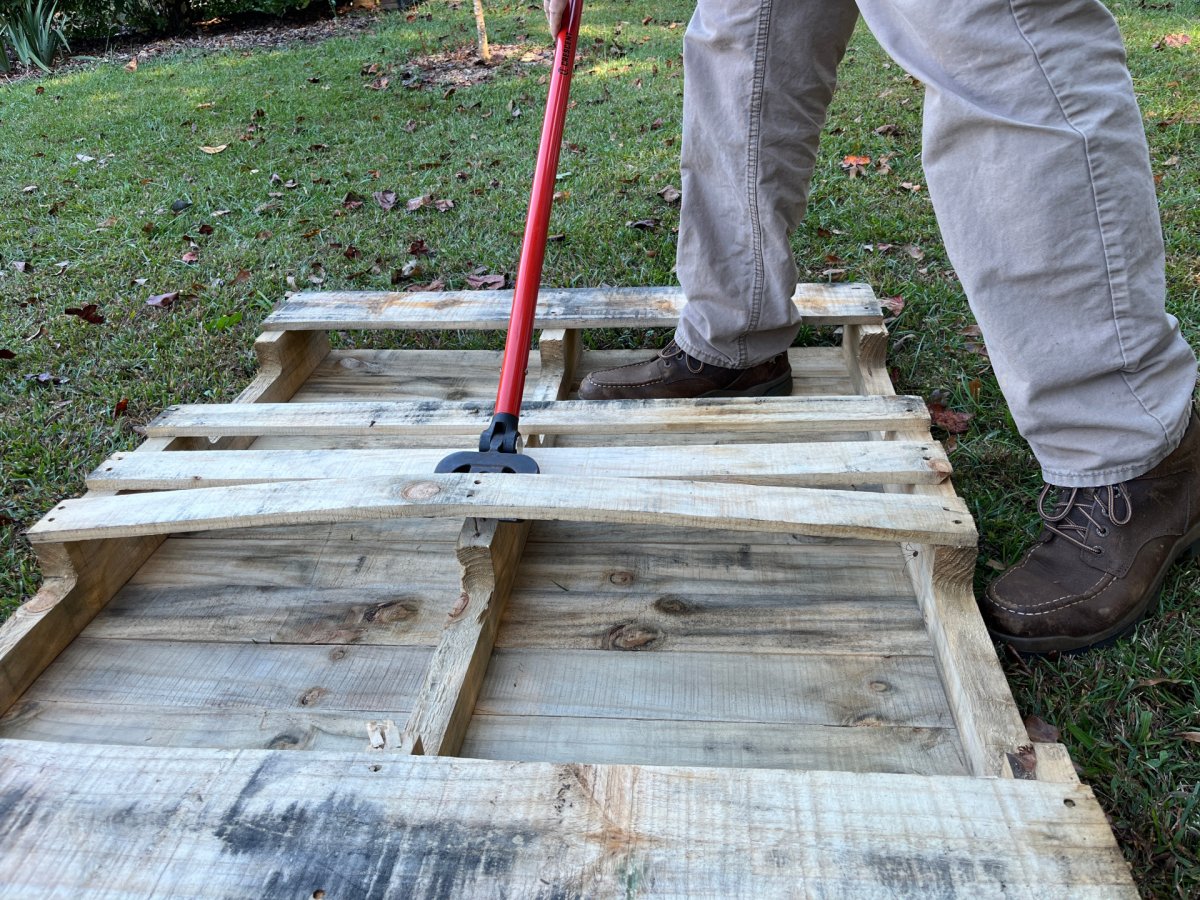
These pry bars are tough hand tools that can handle difficult tasks and are easy to control. In our tests, they provided plenty of prying and pulling power while minimizing damage to the boards we disassembled. Read on to learn more about the best pry bars for all kinds of jobs.
Best Overall
Photo: AmazonWhat We Like
- Flat profile causes less surface damage
- Good leverage for general use
- Dual nail pullers, rocker, and low-angled
- Lightweight but strong
What We Don’t Like
- Not suitable for heavy-duty prying
- Shorter reach than other options
Product Specs
- Length: 15 inches
- Weight: 1.5 pounds
- Material: Spring tempered steel
Our Ratings
| Functionality | Durability | Grip | Value |
| 4.8/5 | 5/5 | 4.5/5 | 4.8/5 |
The Vaughan SuperBar earned the top spot on our list primarily due to its versatility. This is the one pry bar we found most useful in most situations. The flattened crowbar design is lightweight and came in handy for all kinds of tasks, such as pulling nails, removing baseboards, prying up tiles, and more. It is forged from spring tempered steel for strength and durability, and powder-coated for added protection. The price was surprisingly affordable. The tool measures 15 inches long and weighs 1.5 pounds, so it fits conveniently into a tool box.
This tool was easier to use, more precise, and caused less surface damage than the larger pry bars we tested. That makes it more suitable for removing baseboard from drywall or pulling old picture nails from the wall. It also offered stronger leverage than the smaller cat’s paw, which was helpful when pulling stubborn ring shank nails.
The SuperBar did a good job when we were demolishing shipping pallets, but it was a little bit undersize when it came to pulling off deck boards, especially those still held by screws with stripped or broken heads. We also noted that the flat ends were helpful for scraping old caulk and dried adhesive drips. If we had to choose one pry bar to have on hand for every project, the Vaughan SuperBar would be it.
What our tester says: “The Vaughan SuperBar is lightweight and easy to keep on hand all the time. I’ve used it for all kinds of projects, from flooring and trim to patio pavers and flagstone walks.”—Mark Wolfe, Product Reviews tester and writer
Get the Vaughan pry bar at Amazon or The Home Depot.
Best Bang For The Buck
Photo: AmazonWhat We Like
- Sharp claw grips embedded nails
- Fits easily into tight spaces
- Requires less movement for lever action
- Good for rough carpentry and demolition
What We Don’t Like
- Causes damage to the surface
- Not effective for large, heavy objects
Product Specs
- Length: 11 inches
- Weight: 12 ounces
- Material: High carbon steel
Our Ratings
| Functionality | Durability | Grip | Value |
| 4.5/5 | 5/5 | 4.8/5 | 4.8/5 |
The Spec Ops cat’s paw nail puller offers excellent maneuverability in tight spaces, a lightweight build, incredible toughness, and ease of transport. It was also surprisingly affordable. This small pry bar measures just 11 inches long and weighs less than a pound, making it another outstanding option for the tool box.
This tool was a nice upgrade over the claw on our hammer when it came to removing deep nails. It features sharpened claw ends that can be driven into the wood in order to access countersunk nail heads. The angled rolling head end allows it to pull nails in tighter spots than a traditional gooseneck crowbar could, while still providing relatively strong pulling leverage.
However, proportionality is another important consideration. This tool is best for smaller projects—for example, removing a few nails or aligning parts—where precision is more important than power. Pallet disassembly and deck removal were doable, but much slower going than with the larger pry bars.
A few of the features that stood out to us were the flattened driving surface on the rear of the angled, the precision-honed claws, and the skeleton-like shaft that kept weight to a minimum. It provided a sure grip on nail heads with minimal vibration when we struck it with a hammer.
Get the Spec Ops pry bar at Amazon, Lowe’s, or Ace Hardware.
Best For Demolition
Photo: AmazonWhat We Like
- Longer, thicker bar for heavy-duty leverage
- Time-tested crowbar design
- Ideal for prying, lifting, and pulling
- Indestructible in typical use-cases
What We Don’t Like
- Too big and heavy for general use
Product Specs
- Length: 36 inches
- Weight: 8.4 pounds
- Material: High carbon steel
Our Ratings
| Functionality | Durability | Grip | Value |
| 4.1/5 | 5/5 | 4.8/5 | 4.5/5 |
A wrecking bar is the tool of choice for demolition, and this Stanley FatMax version is a top all-around performer. The conventional crowbar design is enhanced with polished chisel tips and an exaggerated flattened hook end. The high carbon steel is powder-coated for added corrosion resistance. This heavy-duty tool measures 36 inches in length and weighs 8.4 pounds.
This is not a flashy tool, but the conventional design has stood the test of time because it simply works. Depending on the specific application, it increases the force as a class 1 or class 2 lever. Not to mention its effectiveness at smashing things. The gooseneck hook accommodates prying from various angles and increases leverage while doing so. Extended flat areas on both ends help preserve work surface integrity while removing nails.
In our tests, the FatMax wrecking bar was one of the few pry bars that was capable of pulling securely fastened deck screws out of a joist. It was also our favorite tool for demolishing pallets because the extra length made it easy to separate boards and pull ring shank nails. Although it was heavy enough to smash through thin boards, it was easy to maneuver and pull nails at different angles.
Get the Stanley pry bar at Ace Hardware, Walmart, or Acme Tools.
Best For Landscaping
Husky 60-Inch Pinch Point Pry Bar
Buy at The Home DepotWhat We Like
- Chisel tip initiates separation of heavy objects
- Long handle for added leverage
- Heavy-duty heat-treated steel
- Great for landscaping with stone or heavy timbers
What We Don’t Like
- Not equipped to pull nails
- Specialty, single-purpose design
Product Specs
- Length: 60 inches
- Weight: 18 pounds
- Material: Steel
Our Ratings
| Functionality | Durability | Grip | Value |
| 3.8/5 | 5/5 | 4/5 | 4.8/5 |
When removing or repositioning large, heavy objects like flagstones, decorative boulders, landscape timbers, or retaining wall blocks, a pry bar makes the job easier and safer. That’s where the Husky pinch point bar can help. This heavy-duty pry bar features a thick chisel end for prying and digging in compacted soil and a stout 60-inch steel handle for maximum leverage.
Since it’s not designed for pulling nails, we created a different set of tests for this tool. We used it to pull old fence posts, watermelon-size rocks, and thick tree roots from a garden area that was scheduled for renovation. In most cases, we laid a short 2×4 on the ground to use as a fulcrum.
We discovered that the Husky pry bar does a good job of breaking up hard-packed soil and chipping away sloppy concrete edges. The chisel tip also worked well for lifting flagstones in a pathway for releveling and nudging them back in place afterward. The only downside was the tapered handle. Although the thin end saves weight, it was harder to grip than even the smallest pry bars.
Get the Husky pry bar at The Home Depot.
Best Set
Crescent 4-Piece Demolition Hammer And Pry Bar Set
Buy at The Home DepotWhat We Like
- 3 pry bars and a demolition hammer
- Adjustable pry bar heads
- Anti-vibration handles
- Great for remodeling and deck renovation
What We Don’t Like
- Bull bar prongs cannot straddle double joists
- Adjustment mechanisms might be weak points
Product Specs
- Length: Demolition pry bar 30 inches, flat pry bar 15 inches, bull bar 44 inches
- Weight: Demolition pry bar 4.7 pounds, flat pry bar 1.7 pounds, bull bar 7.7 pounds
- Material: Alloy steel
Our Ratings
| Functionality | Durability | Grip | Value |
| 4.9/5 | 5/5 | 5/5 | 4.2/5 |
Whether you are restoring a deck or gutting a whole house for renovation, this demolition tool set from Crescent has all the prying and pulling tools you need. It includes a demolition hammer with a built-in board bender, a 15-inch wonder bar, a 30-inch demolition bar with an adjustable head, and a 44-inch bull bar with an adjustable head.
In our tests, the bull bar stood out as a powerful back saver. We were able to pull up deck boards and subfloor with minimal effort, and it even pulled out 3-inch deck screws. The indexing head was helpful too, as it allowed us to apply pressure horizontally or vertically as the situation demanded. Unfortunately, the “bull horns” on the prying end were a bit too close together, so we had some difficulty working over doubled joists.
The 30-inch adjustable demolition bar was a nice alternative to a conventional wrecking bar. It allowed us to pry at different angles, and it was more than 3.5 pounds lighter than the FatMax wrecking bar we discussed earlier. Because of the lightweight build, we initially used it with a bit of caution, but gradually it proved that it was up to all of our heavy-duty tasks. The only thing we would change is the flat part of the adjustable end—we prefer a traditional curved neck.
We really liked the overmold grips on the flat pry bar, 30-inch demo bar, and hammer. They provided a nice cushioned grip that felt secure and dampened vibration. After a couple of hours separating boards, our hands still felt great.
What our tester says: “I like that this kit includes a demolition hammer and flat pry bar. Those are two of the most versatile tools in this guide. The two adjustable tools are intriguing—I always anticipate moving parts breaking, but they functioned perfectly in our tests.”—Mark Wolfe, Product Reviews tester and writer
Get the Crescent pry bar set at The Home Depot.
Jump to Our Top Picks
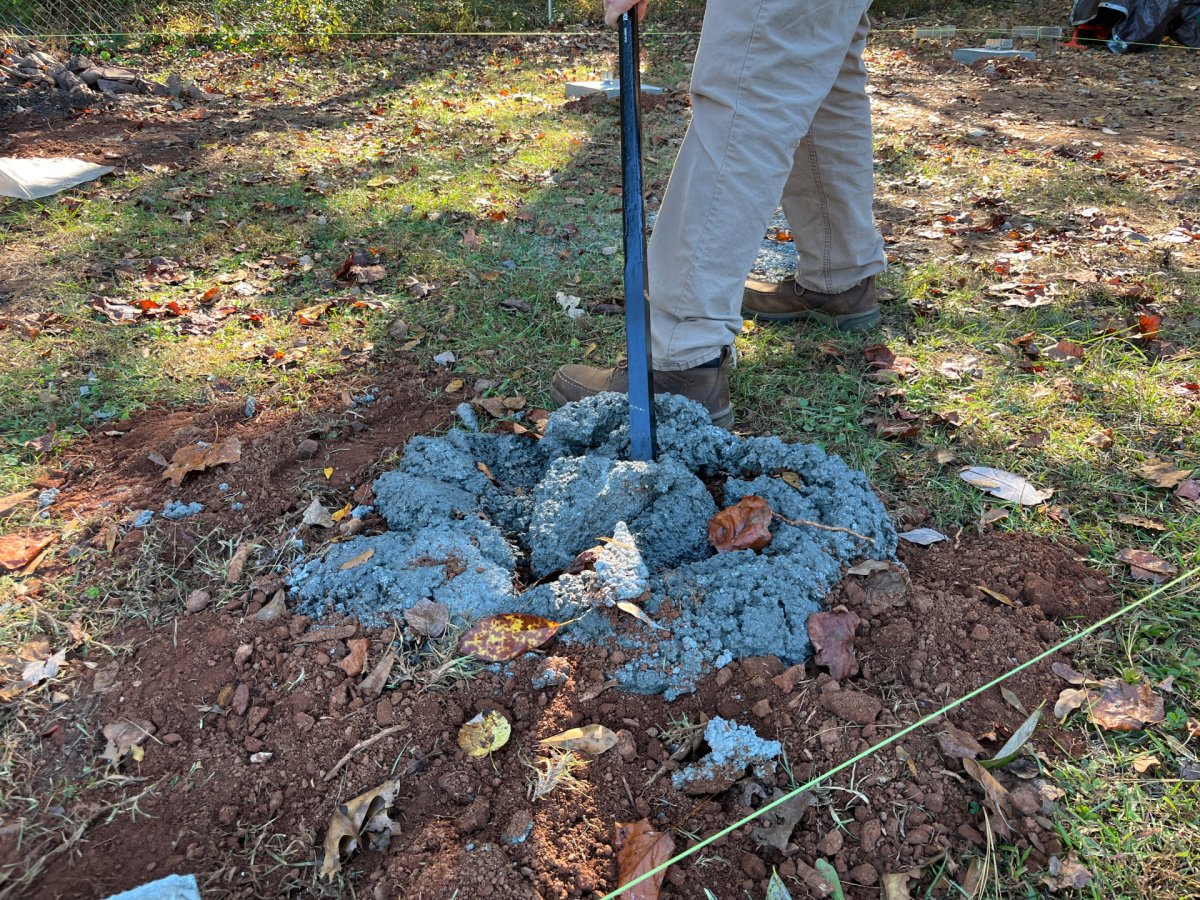
How We Tested the Best Pry Bars
| Products tested | 5 |
| Time spent testing | 12 hours |
| Tests performed | 6 |
| Price range | $12 to $130 |
We researched top-rated pry bars from 14 tool brands before bringing in five options for testing. Our list included different types and sizes for various specialized small and large-scale applications. To test them, we spent two days tearing apart wood pallets and dismantling an old wooden deck. We used each pry bar for at least an hour at a time in both applications. Afterwards, we recorded our observations on a scoring rubric and awarded points regarding overall functionality, durability, grip, and value. When the work was finished, we compared results and tallied the scores to determine an overall winner.
| Product | Functionality | Durability | Grip | Value |
| Spec Ops 11-Inch Cat’s Paw Nail Puller | 4.5/5 | 5/5 | 4.8/5 | 4.8/5 |
| Vaughan 15-Inch Flat Pry Bar | 4.8/5 | 5/5 | 4.5/5 | 4.8/5 |
| Stanley FatMax 36-Inch Wrecking Bar | 4.1/5 | 5/5 | 4.8/5 | 4.5/5 |
| Crescent 4-Piece Demolition Hammer and Pry Bar Set | 4.9/5 | 5/5 | 5/5 | 4.2/5 |
| Husky 60-Inch Pinch Point Pry Bar | 3.8/5 | 5/5 | 4/5 | 4.8/5 |
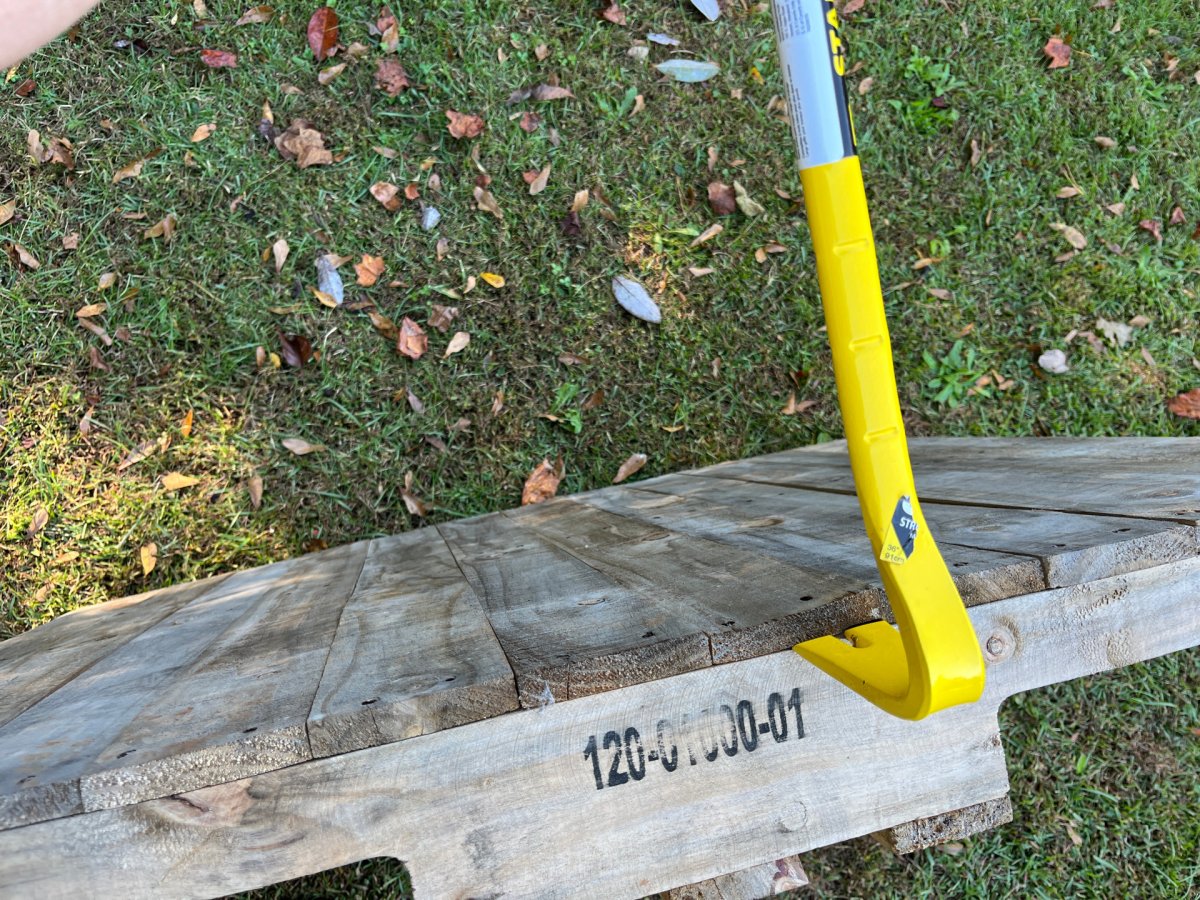
What to Consider When Choosing a Pry Bar
Different projects have different requirements, so it’s important to choose the right pry bar for the job. Consider these points as you navigate through the options.
Types of Pry Bars
First, consider which type of pry bar is best suited for the project at hand. This is more about the tool’s design than its size or weight. Choosing the right type will make it easier to pull nails, preserve the wood surface, or apply more leverage, as the project demands.
Rolling Head Pry Bar
Rolling head pry bars, including cat’s paw nail pullers and others, have short, curved working ends and relatively long handles. This configuration produces maximum leverage for the size with a high degree of control and precision. The round base facilitates repositioning in any direction.
Wonder Bar
A wonder bar is a flattened version of the old familiar crowbar. One end is either L-shaped or round-curved, and the other has a flat angle. Both ends have nail pullers, and possibly a teardrop-shaped nail puller slot in the shaft near the flat end. They typically measure between 7 and 15 inches long. The flat steel construction makes them lightweight and easy to transport.
Wrecking Pry Bar
A wrecking bar is a heavy-duty pry bar made of round or hexagonal steel with a flattened, angled end and possibly a gooseneck end with a nail puller. Most of them are 30 inches or longer. Their size and toughness make wrecking bars the ideal choice for larger projects and rougher work, including demolition, prying, pulling nails, scraping, and lifting or positioning heavy objects.
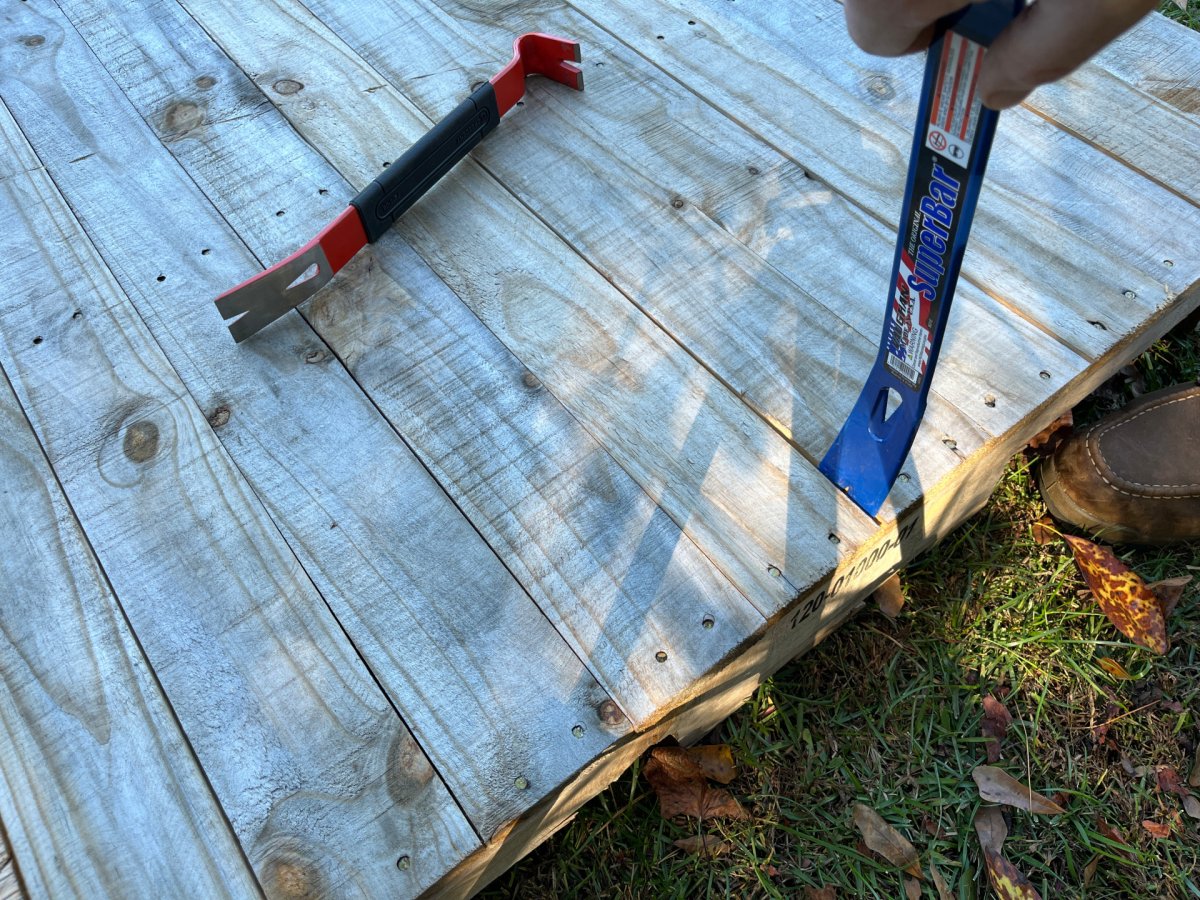
Other Pry Bars
Other types of pry bars include pinch bars, railroad bars, and adjustable bars. Pinch bars are equipped with chisel and wedge-shaped tips to initiate the separation of heavy objects and aid in lifting or positioning. Adjustable pry bars have locking pivot mechanisms to improve ergonomics for the conditions at hand. Railroad pry bars and pinch bars are used to assist in lifting and positioning large, heavy items like flagstones, boulders, or landscape timbers.
Material
While most pry bars are made of high-carbon steel, which withstands the rigors of prying heavy objects, other materials are sometimes used. Alloy steel offers better corrosion resistance and may, depending on the specific composition, offer some flexibility. Hardened steel is known for exceptional durability and structural integrity, making it a great choice for larger, heavy-duty pry bars. For smaller tools that you’ll carry all day, consider upgrading to a lightweight but incredibly strong titanium pry bar.
Weight, Length, and Handle
A mini pry bar can be as small as a screwdriver, weighing just a few ounces. Some large pry bars measure more than 60 inches long and weigh up to 20 pounds. Since they come in so many different variations, you will want to choose not only the right type, but also the right size. Consider both length and weight. A longer bar will give you better leverage, but will also weigh more. A shorter, lighter bar will be easier to carry and fit into tight spaces, but may not be adequate for the toughest work.
The tool’s handle may be undifferentiated from the shaft, which is fine for casual use. For consistent use, especially with heavy-duty prying or where vibration is noticeable, a cushioned handle will be much more comfortable.
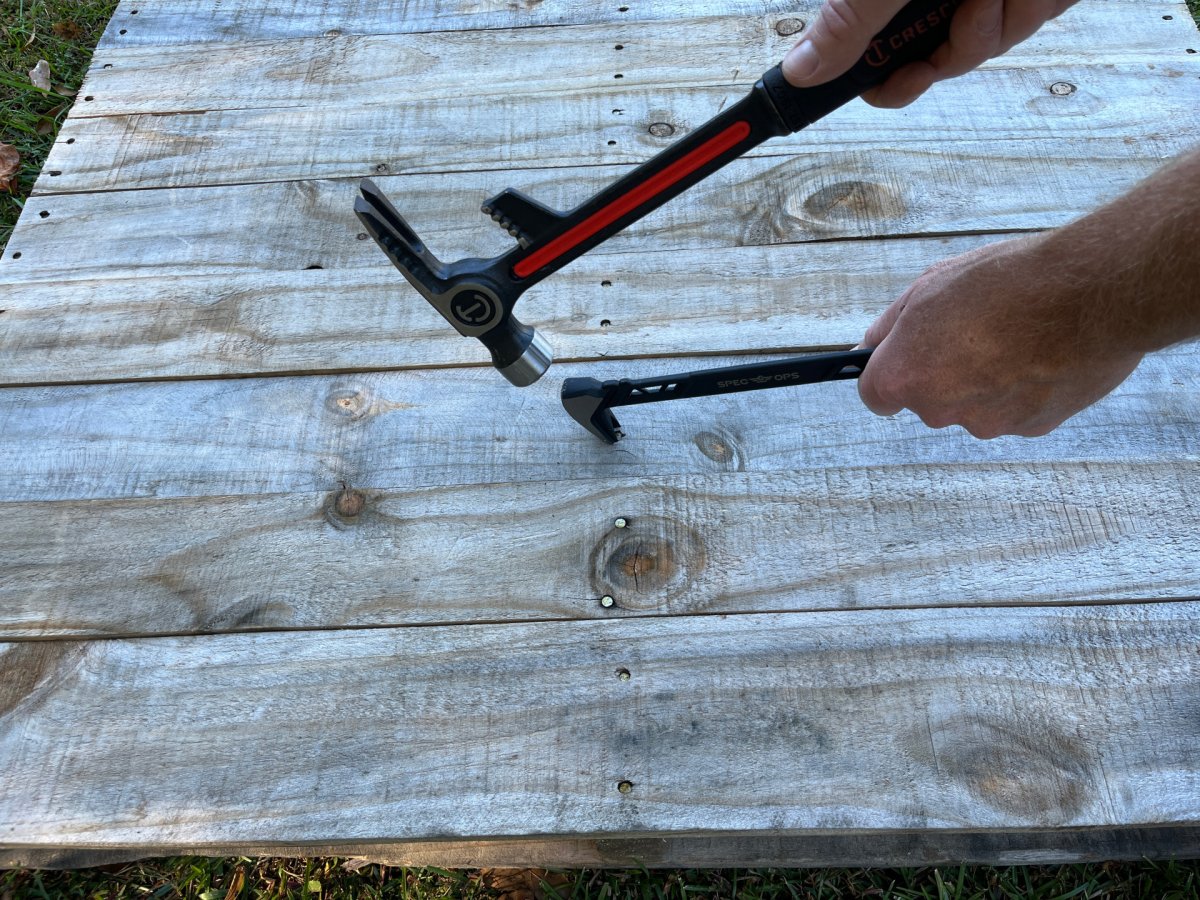
FAQs
Pry bar versus crowbar is like rectangle versus square—the second is a type of the first. A crowbar is a pry bar that has a single curved end and flattened, notched ends. To further specify, both wonder bars and wrecking bars are types of crowbars.
Our favorite pry bar for removing baseboard, and other general use, is the 15-inch wonder bar.
These tools are built for heavy use and low maintenance. Clean it if it gets dirty. Store it in a dry location. Use a grinder to touch up the flat ends if the edge gets rolled with use.
If the pry bar is equipped with a nail puller, either a notch or a teardrop cutout, it can be used to remove nails. Our favorite design for removing stubborn, deep-set nails is the cat’s paw nail puller.
Meet the Tester
Mark Wolfe is a writer, product tester, and avid DIYer. When he isn’t writing, he spends his time upgrading, repairing, and replacing anything and everything in his home, yard, and garden. He tests and writes reviews about tools, lawn care, and home repair products, and outdoor living goods.
Additional research provided by Bob Beacham.
